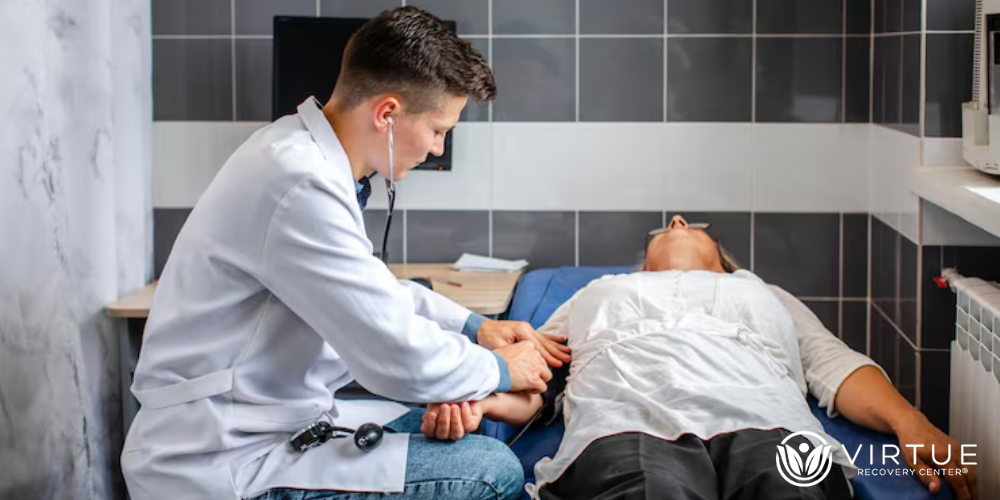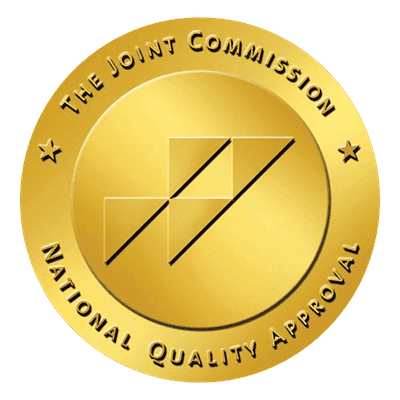Key Takeaways
- Women who have been through trauma, such as abuse or violence, are more likely to misuse prescription opioids.
- Using OxyContin to deal with emotional pain can quickly lead to physical dependence.
- A medical detox for drugs is an essential first step in safely dealing with OxyContin withdrawal symptoms and starting a long-term recovery.
- Trauma-informed care is making trauma therapy and detox programs work together more and more in Texas and other states.
- Gender-responsive drug detox programs that help women heal both physically and emotionally are helpful.
Introduction
For a lot of women, abusing opioids isn’t because of partying or being reckless; it’s because they’re in pain. Specifically, emotional and mental pain that comes from traumatic events like domestic abuse, sexual assault, neglect as a child, or PTSD after giving birth. In these cases, people often use OxyContin to treat themselves, which provides them with temporary relief from deep, unresolved trauma.
But what starts as a way to deal with stress can turn into a full-blown addiction. Women who abuse OxyContin after going through trauma often suffer in silence, stuck between the drug’s physical effects and the emotional scars they haven’t yet dealt with. Drug medical detox is a safe and effective way to get out of addiction that also respects and responds to trauma.
Why Do Women With Trauma Often Abuse OxyContin?
OxyContin is a potent opioid that is often given to people with chronic or severe pain. It works to relieve physical pain, but it also numbs emotional pain, which makes it very appealing to people who have been through trauma. Women who have been sexually abused, beaten, or left alone may use opioids like OxyContin to get away from flashbacks, nightmares, and always being on guard.
Sadly, the body quickly becomes tolerant, so you need to take more of it to achieve the same level of relief. Over time, physical dependence makes psychological dependence even worse. A lot of women can’t stop even if they want to, especially if they don’t get the help that deals with the root cause: trauma.
What Makes Drug Medical Detox Necessary for OxyContin Withdrawal?
Getting off OxyContin can be tough on the body and mind. Some of the symptoms are:
- Pain in the joints and muscles
- Feeling sick, throwing up, and having diarrhea
- Sweating and getting cold
- Not being able to sleep and being restless
- Anxiety and depression
Women who try to quit “cold turkey” at home often go back to their old ways within a few days because they are so uncomfortable and scared. In a clinical setting, drug medical detox offers 24/7 monitoring and helps people deal with withdrawal symptoms with medications, hydration, and emotional support.
A detox program can also start to deal with the trauma that led to the addiction, not just the symptoms. That holistic base is what makes it possible to recover for a long time.
How Does Trauma Therapy Fit Into Detox Programs?

In the past, addiction treatment was mostly about the drug itself. But experts now know that unresolved trauma is often a significant cause of addiction, especially in women. That’s why modern detox programs include trauma-informed care in addiction treatment right from the start (Robinson & Ickowicz, 2022). This means:
- Medical staff are taught how to spot trauma responses and keep people from getting hurt again.
- You can receive emotional support throughout withdrawal, including seeking the help of a therapist.
- Clients are given options for their care, which makes them feel safe and in charge.
- At every step, privacy, consent, and respect for others are stressed.
Trauma therapy in Texas has changed to include trauma-informed detox centers, where women can safely start the healing process without worrying about being judged or ignored emotionally.
What Is Trauma-Informed Care, and Why Is It Important?
Trauma-informed care is a way of treating people that understands how trauma affects their behavior, mental health, and ability to heal. Instead of saying, “What’s wrong with her?” When someone is getting trauma-informed care, they ask, “What happened to her?”
This difference is significant for women in detox. Many people have been misdiagnosed or misunderstood for a long time. A detox program that takes trauma into account:
- Understands how trauma affects how people become addicted
- Doesn’t use harsh language or confrontational language
- Provides emotional support and therapy
- Builds trust by being open, safe, and understanding
Women are more likely to stay in long-term treatment and break the cycle of substance use when they feel seen and supported during detox (NCBI Bookshelf, 2006).
What Is the Importance of Detox Programs That Are Specific to Gender?
Women deal with trauma and addiction in different ways than men do, both biologically and socially. Gender-specific detox programs are meant to deal with those differences and make it easier for people to heal.
Some good things about drug detox programs for women are:
- Safer places for women who have been abused in the past
- Help from other people who have been through similar things
- Help with parenting and taking care of kids
- Specialized trauma therapy that deals with problems that are specific to women, such as sexual trauma and losing a baby
- Monitoring hormones and body functions during detox
These kinds of programs create a safe space for women to discuss their experiences and receive the help they truly need.
What Happens After You Detox?

Drug medical detox is the first important step, but it’s not the last. After they are stable, women must move on to a complete treatment program that keeps the healing going. That could mean:
- Inpatient rehab with help for people with two diagnoses
- Outpatient programs that let you pick your schedule
- Individual and group therapy that helps people get over trauma
- For trauma, there is cognitive-behavioral therapy (CBT)
- Treatment for depression, which is often necessary for women after detox
People who abuse OxyContin don’t usually do it alone. It’s connected to mental health issues, emotional pain, and broken trust. Long-term recovery depends on therapy that lasts, ways to keep from relapsing, and a safe support system.
Conclusion
OxyContin can be a dangerous escape for women who have been through trauma. It can give them temporary relief, but it can also cause long-term harm. But there is a way out. Drug medical detox offers women a safe, structured place to start their recovery that not only heals their bodies but also honors the emotional wounds that led to their addiction.
At Virtue Recovery Center, Killeen, we believe in whole-person healing, not just the symptoms. Our trauma-informed, gender-responsive detox and addiction treatment programs give women a safe place to get off OxyContin and rebuild their lives with respect and help. To start your recovery journey with care that understands what you’ve been through, call us now at 866-843-0545.
Frequently Asked Questions
Why do women who have been through trauma abuse OxyContin?
A lot of women use opioids like OxyContin to deal with trauma, anxiety, or PTSD that hasn’t been dealt with. The drug makes you feel numb emotionally, but it can quickly lead to addiction.
Why is drug medical detox safer than quitting drugs at home?
Medical detox is much safer than detoxing on your own because it includes 24-hour monitoring, symptom relief, and emotional support during withdrawal.
What does it mean to use trauma-informed care in addiction treatment?
Trauma-informed care takes into account how past trauma affects addiction and puts safety, empowerment, and emotional support first during the treatment process.
Are there drug detox programs just for women?
Yes. Programs that are only for women give them safe, supportive places to go, especially if they have been abused or traumatized in the past. Trauma therapy and family services are often part of these programs.
Resources:
- Robinson, Kaye, and Sarah Ickowicz. “Research with Women Who Use Drugs: Applying a Trauma‑Informed Framework.” Journal of Addiction Medicine, Nov.–Dec. 2022, PubMed Central, U.S. National Library of Medicine, https://www.ncbi.nlm.nih.gov/pmc/articles/PMC9970160/.
- Centers for Disease Control and Prevention. Treatment of Substance Use Disorders. U.S. Department of Health & Human Services, 25 Apr. 2024, https://www.cdc.gov/overdose-prevention/treatment/index.html.
- U.S. National Library of Medicine. “Patterns of Use: From Initiation to Treatment.” In Substance Abuse Treatment: Addressing the Specific Needs of Women, NCBI Bookshelf, 2006, https://www.ncbi.nlm.nih.gov/books/NBK83243/.
- About the Author
- Latest Posts
Gigi Price holds licenses as a Master Social Worker and Clinical Drug Counselor. She completed her master’s degree in Social Work at Texas State University. Over the last decade, Gigi has been dedicated to utilizing evidence-based practices to enhance patient care and treatment planning, resulting in positive, long-term outcomes for patients and their families. Her passion lies in creating a treatment environment where professionals collaborate to bring about positive change and provide a safe, trustworthy therapeutic experience. Patients can be confident in receiving top-quality care under her leadership.
In her role as the Clinical Director of Virtue Recovery Houston, Gigi conducted research to identify the most effective approaches for treating patients with acute mental health diagnoses, PTSD, and Substance Use Disorder. She then assembled a team of skilled clinicians who could offer various therapeutic modalities, such as Cognitive Behavioral Therapy (CBT), Dialectical Behavioral Therapy
(DBT), Acceptance and Commitment Therapy (ACT), Somatic Exposure, Eye Movement Desensitization and Reprocessing (EMDR), and Cognitive Processing Therapy (CPT). Gigi takes pride in overseeing the development and implementation of Virtue Houston’s Treatment Program, which includes two specialized therapeutic curricula tailored to the unique needs of individuals struggling with mental health issues, addiction, and PTSD.












